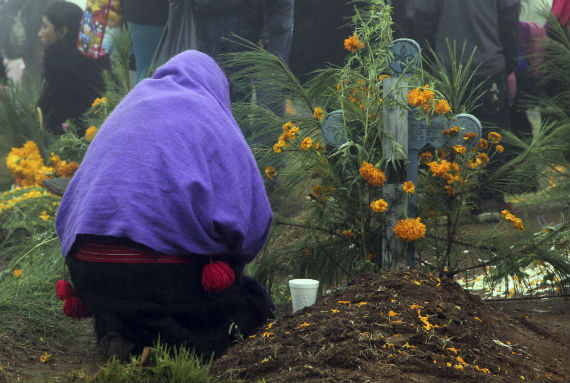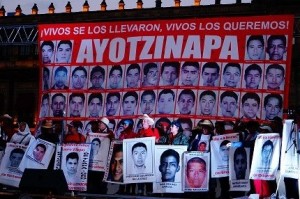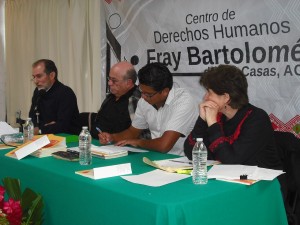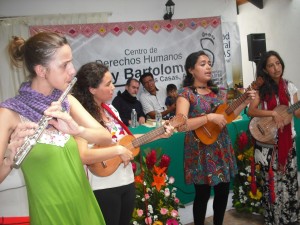Sorry, this entry is only available in Español. For the sake of viewer convenience, the content is shown below in the alternative language. You may click the link to switch the active language.
Los hombres inteligentes suelen ser crueles.
Los imbéciles lo son hasta la monstruosidad.
Darrell Standing*
La IV Guerra Mundial, la de los mercados, sigue su curso. Esta guerra ha sumado a sus bombas financieras, una escalada en las guerras militares. ¿Qué tienen en común las guerras simultáneas de Ucrania, Gaza, Irak, Siria y Libia? Gas y petróleo (Bajo la Lupa, 20/07/14). La confrontación más sería es entre los EU, Rusia y sus respectivos aliados. Una vez que los EU han insistido en intervenir en el área de influencia o de interés rusa -en Ucrania,agudizar tensiones en Medio Oriente y apoyar el brutal genocidio de Israel en la Franja de Gaza -, el gobierno Ruso tomó la iniciativa y abrió el frente en la Región de América Latina y El Caribe. El 11 de julio de 2014, el presidente ruso, Vladimir Putin, arribó a Cuba en visita oficial y se reunió con Raúl Castro. El día 12 hizo una visita “relámpago” a Nicaragua. El día 13, en Brasil, se entrevistó con Dilma y sostuvo conversaciones con Mujica. El 15 de julio de 2014 participó en la VI Cumbre de BRICS para discutir el”Crecimiento Inclusivo: Soluciones Sostenibles”. Por su parte,el presidente de China, Xi Jinping-fuerte aliados de Putin en Asia -, del 15 al 23 de juliorealizó una visita de Estado a Brasil, Argentina, Venezuela y Cuba. Ambos mandatarios concretaron acuerdos políticos, económicos, de seguridad, tecnológicos con sus contrapartes en la región.
Inmediatamente después, el 17 de julio, fue derribado en Ucrania un Boeing 777-200 de Malaysia. Se agudizaron las tensiones Yanqui-Rusas. Israel recrudeció sus ataques en la Franja de Gaza: La cifra de palestinos muertos era de 1,650 y casi 9,000 heridos. Del lado israelí han caído 32 soldados y tres civiles.Pero el primer ministro israelí, Benjamin Netanyahu, aseguró: “continuamos nuestras operaciones en Gaza con todas nuestras fuerzas, en tierra y aire…” (http://www.jornada.unam.mx/2014/07/25/mundo/027n1mun)
Días después cayó un avión de la aerolínea Transasia en Taiwan y en Malí se estrelló un avión de la compañía Swiftair. El 25 de julio se reunió Salinas-Peña Nieto con el primer ministro de Japón Shinzo Abe… Las piezas en el tablero se mueven con rapidez cambiando escenarios… el mundo.
La guerra en México dejó, en 2013, “Un promedio de 62 homicidios por día”. “En total hubo 22 mil 732 homicidios que representan una tasa de 19 por cada 100 mil habitantes a nivel nacional, pero la tercera parte de los estados rebasó dicha cifra, informó el Instituto Nacional de Estadística y Geografía (Inegi).” (http://www.jornada.unam.mx/ultimas/2014/07/23/en-2013-hubo-casi-23-mil-homicidios-en-mexico-informo-el-inegi-1229.html)
Los contextos en Chiapas… Avanza el Plan Mesoamericano (antes Puebla Panamá) con sus… Megaproyectos:
- Supercarreteras (1 eje troncal centro, 2 ejes troncales hacia el norte, 1 eje troncal hacia la frontera, 1 eje troncal hacia la costa);
- Inaugurado el Aeropuerto Internacional de Palenque;
- Minas (111 concesiones en exploración y explotación, sobre todo en las regiones Norte, Sierra y Frontera);
- Cultivo de Biocombustibles (En la Costa, Sierra, Norte y Selva);
- Presas (4 Funcionando, 1 concesionada, 15 factibles, 2 en estudio de factibilidad, 4 de Gran Visión);
- Cultivo de Transgénicos. (Ver mapas de la asociación Otros Mundos).
- Proyectos Turísticos (28 funcionan en la Selva Lacandona);
- Petróleo (Ver mapa: Áreas de potencial petrolero, Macroproyecto Ocosingo – Lacantún, Yacimientos petroleros, Pozos en operación, Campamentos exploratorios.
- Ocupación Militardel Territorio Chiapaneco;
- Emplazamiento de marines en territorio guatemalteco.
Sume usted: Drogas (Cultivos de marihuana y amapola). Eltrasiego y comercio de drogas duras en prácticamente todas la regiones de Chiapas (una ruta de la mariguana son va de San Cristóbal de las Casas, Chiapas, a Mérida).Traficantes de personas, enervantes y armas de fuego es la línea fronteriza que divide a México de Guatemala. Socialmente se vive la desestructuración de la vida familiar y comunitaria. Los cambios culturales se profundizan. Los tejidos sociales son otros. Los intereses neoliberales son enormes.
La diversidad: En Chiapas, los paisajes sociales son como la entidad: cambiantes,diversos. El 24 de julio, amaneció despejado, soleado y con temperatura agradable en San Cristóbal de Las Casas. A eso de las 11 horas unos 500 tzotziles chamulas -residentes en esta ciudad- marchaban por el periférico poniente en contra la “orden de aprensión” de uno de sus dirigentes de la comunidad San Antonio los Montes.
Al medio día, el Centro Histórico de la Ciudad de Las Casas y sus andadores turísticos -Guadalupano y Eclesiástico-, están abarrotados con miles de turistas nacionales, extranjeros y vacacionistas locales. Es indudable que esta ciudadse dio a conocer en el mundo -como nunca en su historia-, el 1 de enero de 1994. Beneficios colaterales capitalizados por los empresarios locales que han expresado: “Ya no tengo de qué preocuparme… si hay guerra mis hoteles y restoranes se llenan de periodistas… y si no hay guerra se llenan de turistas”. Eso pasa cada temporada.
En esos andadores las mujeres tzotziles vendedoras de artesanías compiten con decenas de artesana/os de Europa y América Latina que lucen sus tatuajes, los cortes de pelo, la ropa de hoy. Venden su producción artesanal: aretes, pulseras viajando por los destinos turísticos. Otros viajerosson grupos de música judíos, gringos o latinos que amenizan los espacios mientras los restoranes y bares hacen su verano de julio-agosto. Otros hacen malabarismo. Si pone atención en ese flujo humano, en esa franja de la población, verá que las guerras capitalistas y la crisis les son lejanas… ajenas.
Son las 12 horas y en el Andador Eclesiástico, cerca de la Plaza de Caridad, un grupo de niñas, niños, mujeres y hombres tzotziles musulmanes se han reunido para manifestar su solidaridad con el pueblo Palestino. Son parte del clan Checheb, de la Comunidad Islámica en México – Mezquita Al Kautar. Portan banderas de Palestina y carteles manifestando su apoyo. Se desplazan y gritan exigiendo fin a la guerra y genocidio en Gaza. Es la primera vez, en casi 18 años, que los indígenas musulmanes se manifiestan públicamente en San Cristóbal de Las Casas. Recorrieron el andador, llegaron a la Plaza Catedral y pidieron por la paz en Palestina. Después dieron dos vueltas al Parque Central sorprendiendo a turistas y residentes.
Llegó la hora (Dhur) de la oración (Salat). El grupo de indígenas musulmanes -ubicado a la izquierda de la fachada de la Catedral- se orientó hacia Meca y apoyándose en las banderas de Palestina cumplieron con uno de los Pilares del Islam. En la manifestación participó también Nahela A. Morales de la comunidad musulmana radicada en Nueva York, quien sostuvo que “los ataques en contra de Palestina son inhumanos y no tienen nada que ver con la religión ni razas; duele porque las víctimas son principalmente niños y mujeres inocentes”. Anunció que en el contexto de una Jornada Latinoamericana por Palestina, los musulmanes indígenas de Chiapas y musulmanes de Guadalajara se manifestarían el domingo 3 de Agosto.
En las montañas: el Pueblo Creyentey los Rebeldes
En 2011 Marcos había escrito: el tejido social está roto en casi todo el país… la cultura nacional está siendo suplantada por otra. En el territorio de la Diócesis de San Cristóbal de Las Casas – queocupa el 50 por ciento de la superficie de la entidad con una población mayoritariamente indígena -, la vida familiar y comunitaria está desestructurada.
En 2012, los catequistas de la diócesis encontraronque la forma de vivir y de pensar en las comunidades había cambiado. Así lo dieron a conocer en el Encuentro de Catequistas (2013).De acuerdo con los catequistas y el jefe rebelde podemos decir queotro es el tejido social y otra es la cultura en México… y en Chiapas. Grave, porque se trata de una construcción neo-li-be-ral.
En ese contexto social local, el 6 de julio de 2014, en los municipios de Simojovel, El Bosque, Rayón y Pueblo Nuevo se movilizaron miles de creyentes en contra del alcoholismo, las drogas y la prostitución. En Simojovel peregrinaron “por la paz”unos 3 mil 500 católicos del Movimiento del Pueblo Creyente y exigieron a las autoridades la clausura de cantinas, centros nocturnos, y de prostitución:
“Ya no tenemos espacios libres de vicios, pues las drogas, el alcoholismo y la prostitución que se encuentran en la actualidad al alcance de niños y jóvenes” (…)“todos hemos sido víctimas de robos, asaltos y asesinatos a plena luz del día como las consecuencia de todos estos males”, manifestaron en un comunicado.
Por su parte Centro de Derechos Humanos Fray Bartolomé de Las Casas afirmó:
“Observamos cómo se va desestructurando paulatinamente la condición social de las familias y comunidades, generando divisiones que atentan contra la colectividad de los pueblos indígenas y campesinos, debilitando su capacidad organizativa, provocando corrupción, aumentando la violencia contra la mujer, las niñas y los niños, deterioros graves a la salud, entre otras consecuencias que están dañando el tejido social y comunitario”.
La respuesta de los caciques locales fue inmediata: amenazaron de muerte a los sacerdotes de Simojovel y de Rayón. Por “la cabeza” del sacerdote de Simojovel ofrecieron 300 mil pesos. Ahora la oferta es de 400 mil pesos.
¿Qué está pasando en Simojovel?
Un producto Neoliberal. Resulta que desde hace años los chinos están invirtiendo en ese municipio. Compran ámbar o rentan tierra donde están los yacimientos de la resina vegetal fosilizada. Eso ha dejado una derrama extraordinaria de dinero en la región que va a parar a las cantinas, antros y prostíbulos. Se ha incrementado el alcoholismo y la drogadicción. Los jóvenes han sido atrapados por el consumismo. Otra parte de los recursos va a parar al comercio local. Eso puede explicar la respuesta violenta de los caciques y comerciantes locales en contra del sacerdote Marcelo y del Movimiento del Pueblo Creyente.Es muy probable que los caciques de la Zona Norte de Chiapas reactiven sus alianzas regionales.
El Congreso Diocesano Pastoral de la Madre Tierra del 22 de enero de 2014, definió la estrategia para las próximas décadas: la defensa de la tierra y el territorio. Se pronunciaron en contra los megaproyectos, minería y las presas. En consecuencia el 19 de julio, 15 mil 400 personas del Pueblo Creyente de Dios de 10 parroquias salieron en peregrinación como pueblos mayas y mestizos a las cabeceras municipales de Pantelho’, Tumbalá, Yajalón, Huixtán, Cancuc, Tenejapa, Oxchuc, Ocosingo, Altamirano y Chilón, “para unirnos a nuestra madre tierra” y declararon:
“Estamos en contra de la venta de alcohol, droga y prostitución en nuestro territorio; pedimos a las autoridades que apliquen la ley y pongan un alto a las muchas problemáticas generadas a raíz de esto. Asimismo exhortamos que se nos consulte adecuadamente ante la construcción de la super – carretera San Cristóbal de Las Casas-Palenque; de tal modo que sea en beneficio de las comunidades y del territorio de nuestros pueblos. De no tomarnos en cuenta no permitiremos su construcción en nuestro territorio”.
En el municipio de Huixtán también se manifestaron en contra de la construcción de la Presa Hidroeléctrica en la Comunidad del Río Florido y de la construcción de una planta de Coca Cola en la Comunidad del Río Molinos Xchel. En el municipio de Altamirano en contra de la venta de madera y los asesinatos en la región. En Bachajón demandaron la terminación del Hospital de Chilón. En Ocosingo,su preocupación por los asesinatos y suicidios, y la corrupción de las Autoridades. Se manifestaron contra la brecha Lacandona y los parques eco-turísticos en la Selva. En San juan Cancuc CANCUC dijeron “No a la represa hidroeléctrica en el Río Chacte”. (Ver: http://chiapasdenuncia.blogspot.mx/2014/07/pueblo-creyente-peregrinacion-por-la.html)
Meses antes, en el curso de la ofensiva neoliberal en Chiapas, el 2 de febrero, Salinas-Peña Nieto inauguró el Aeropuerto Internacional de Palenque y anunció la construcción de la supercarretera San Cristóbal–Palenque. Más tarde, el 30 de junio, La Secretaria de Turismo, Claudia Ruiz Massieu, entregó el Programa Especial de Desarrollo del Corredor Palenque, Ocosingo, Cerro Azul, Comitán, San Cristóbal de las Casas y Chiapa de Corzo, a través del Fondo Nacional de Fomento al Turismo (FONATUR). Este corredor integrará más de seis destinos locales, permitiendo la diversificación y un mayor reparto de flujos turísticos y extender la estancia de los visitantes en el estado. El 7 de julio, Salinas-Peña Nieto se reunió en Catazajá, Chiapas, con el presidente de Guatemala, Otto Pérez Molina para complicar más el tránsito a las personas migrantes con el encubierto programa “Frontera Sur”.
El 21 de julio, el gobierno de Chiapas dio rápida respuesta a la movilización del Pueblo Creyente. Toda una estrategia:
“Con la ejecución de la carretera San Cristóbal de las Casas-Palenque se creará una vía turística-recreativa, con paradores de descanso y comercio que además difundirán los principales elementos característicos de las culturas de la zona, logrando con ello una vía, además de libre de cuota, dinámica que detone las economías regionales al tiempo de conectar grandes puntos turísticos en Chiapas. No será solamente de origen-destino, es decir no simplemente conectará puntos geográficos, sino se plantea como una herramienta de desarrollo para regiones históricamente rezagas en la entidad, dotándolas de mecanismos para un crecimiento económico autosustentable.” -Bayardo Robles Riqué, titular de la Secretaría de Infraestructura y Comunicaciones (SinfrayC).
Los programas de la Cruzada Contra el Hambre se ha intensificado y se concretan en la entrega de dinero, viviendas, construcción y mantenimiento de caminos, despensas. Además de fortalecer la Contra social el PRI-Verde se han adelantado la campaña electoral del 2015.
Se esperan movilizaciones del Pueblo Creyente en otras regiones de la Diócesis y la reorganización y alianza de la Contra social en cada municipio.
Los rebeldes en Chiapas con 20 meses de actividades públicas y abiertas (de Diciembre de 2012 a Agosto de 2014) deben estar preparados para el encuentro con el Congreso Nacional Indígena (CNI) y pueblos originarios en La Realidad.Como lo han comunicado, uno de los ejes de la táctica para el periodo es la rearticulación con los movimientos indígenas, sociales y los adherentes a la Sexta. Realizaron con éxito las Escuelitas Zapatistas de agosto de 2013, de diciembre de 2013 y enero de 2014. El Estado neoliberal respondió de acuerdo al manual y ordenó sobrevuelos en los Caracoles zapatistas y ordenó el desplazamiento de efectivos de la Policía Federal a la frontera. Los adherentes a la VI en Chilón y Bachajón sufrieron agresiones. El 1 de febrero de 2014, bases zapatistas del ejido 10 de Abril fueron agredidos por la Cioac Democrática y ultrajaron a las religiosas del Hospital San Carlos. El 21 de marzo de 2014 asesinaron a Juan Carlos Gómez Silvano. Le dieron 20 tiros.
El 2 de mayo, militantes de los partidos Verde Ecologista de México (PVEM) y Acción Nacional (PAN) e integrantes dela Central Independiente de Obreros Agrícolas y Campesinos Histórica (CIOAC-H) asesinaron de tres balazos y un machetazo en el rostro al zapatista José Luis Solís López enLa Realidad. El EZLN determinó suspender el encuentro con el CNI en La Realidad y el Seminario Ética frente al despojo.
Ese mes se incrementaron considerablemente la militarización y la vigilancia en toda la franja fronteriza. La”segunda fase” del Operativo Frontera Sur en cinco municipios ubicados en la zona en conflicto, donde participan el Ejército Federal, la Armada de México, PGR, PF, INM y las policías estatal y municipales.
Se espera que inmediatamente después del encuentro en la Realidad, entren al Legislativo las iniciativas de Reforma al Campo y a la Ley Indígena. Tales reformas van encaminadas a hacer de los ejidatarios y comuneros “campesinos libres” que puedan disponer libremente de sus tierras y asociarse como particulares con empresarios capitalistas.
El escenario es adverso a la iniciativa política de los rebeldes. De no construir una propuesta que les permita salir, acercarse a los movimientos en Chiapas y otras entidades del país difícilmente lo podrán lograr en el resto del sexenio de Salinas-Peña Nieto. Es imperioso que el encuentro en La Realidad sea exitoso.
En los últimos años, de 2012 al 2014, en Chiapas hay inquietud, organización, movilización y líneas estratégicas en las plataformas del Pueblo Creyente y de los Rebeldes. Quizá el desafío está en construcción de la táctica.
No debemos olvidar que la Bestia Neoliberal no descansa… sus intereses en Chiapas y en la Región del Plan Mesoamericano no tienen límites…
De esas cosas que suelen suceder en Chiapas. Este 3 de Agosto, por las plazas y andadores de San Cristóbal de Las Casas se manifestó un centenar de personas en la Jornada Latinoamericana por Palestina. Eran tzotziles musulmanes y jóvenes alemanas/es, españolas/es, italianas/os, francesas/ses, brasileñas/os y mexicanas/os de la generación de Seattle. Las mujeres musulmanas portaban el velo. Algunos hombres la chilaba, turbantes o elcufi. El contingente llevó banderas de Palestina, se manifestaron en contra de la guerra y el genocidio de Israel.


 Indígenas chiapanecos que se niegan a abandonar sus casas para dar paso a megaobras terminan muertos, según ONGs. Foro: Cuartoscuro (Continuar leyendo…)
Indígenas chiapanecos que se niegan a abandonar sus casas para dar paso a megaobras terminan muertos, según ONGs. Foro: Cuartoscuro (Continuar leyendo…)





